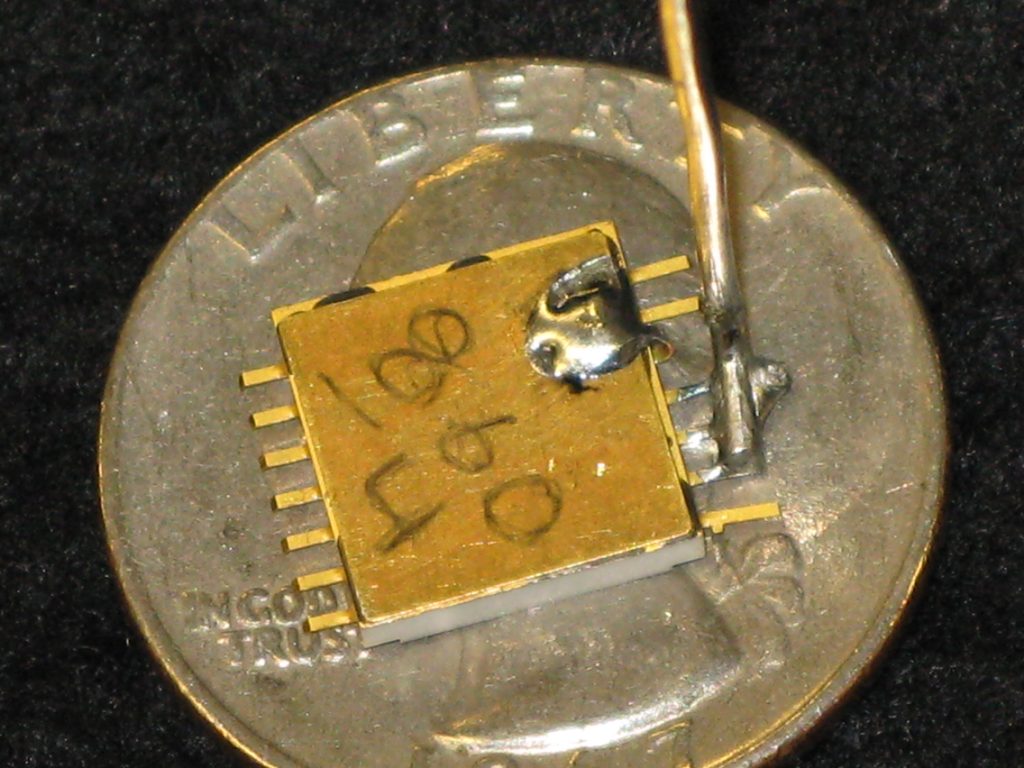Wireless Passive Radiation Sensor
Existing small radiation detectors do not produce an immediate real-time warning of radiation doses because the detectors need to be sent to a lab for readout, which can require days or weeks to complete. Other detectors are fragile, need human interpretation of colors, cost hundreds of dollars each or are not easily mass produced. Therefore, a need remains for a wireless passive radiation sensor that can remotely detect radiation using a portable, inexpensive transceiver.

A novel measurement technique is employed using surface acoustic wave (SAW) devices, passive RF, and radiation-sensitive films to provide a wireless passive radiation sensor that requires no batteries, outside wiring, or regular maintenance. The sensor is small (<1 cm2), physically robust, and will operate unattended for decades. In addition, the sensor can be insensitive to measurement position and read distance due to a novel self-referencing technique eliminating the need to measure absolute responses that are dependent on RF transmitter location and power.
The radiation sensor is triggered by ionizing radiation e.g., gamma or neutron radiation. On exposure to a given level of radiation, the radiation-sensitive film can switch from high resistance (e.g., >105ohm) to low resistance (e.g., <102ohm). The radiation-sensitive film forms catalytic sites when electrons are ionized from the molecules due to a radiation event and the resulting cascade reaction converts the initially dielectric film to a conductive metallic film. This response covers several orders-of-magnitude change in resistance after a minimum radiation threshold is reached. The sensor is analogous to a ‘smoke detector’ in that it detects either the presence or absence of radiation but also retains the exposure information after the radiation is gone like a radiation dosimeter.
immediate response. The sensors do not require batteries that add unacceptable mass and maintenance to the structure or wires to retrieve the data, enabling remote sensing.
The sensor is comprised of non-moving parts, RF monitor, sensor film, and sensor chemistry, enclosed in a robust package. The advantage of this radiation sensor is its size, simplicity, and immediate response. The sensors do not require batteries that add unacceptable mass and maintenance to the structure or wires to retrieve the data, enabling remote sensing.
- Agriculture
- Aircraft and aerospace
- Electric utility
- Health care
- Industrial machinery
- Nuclear power
SD#11151
Published5/9/2014
Last Updated5/9/2014